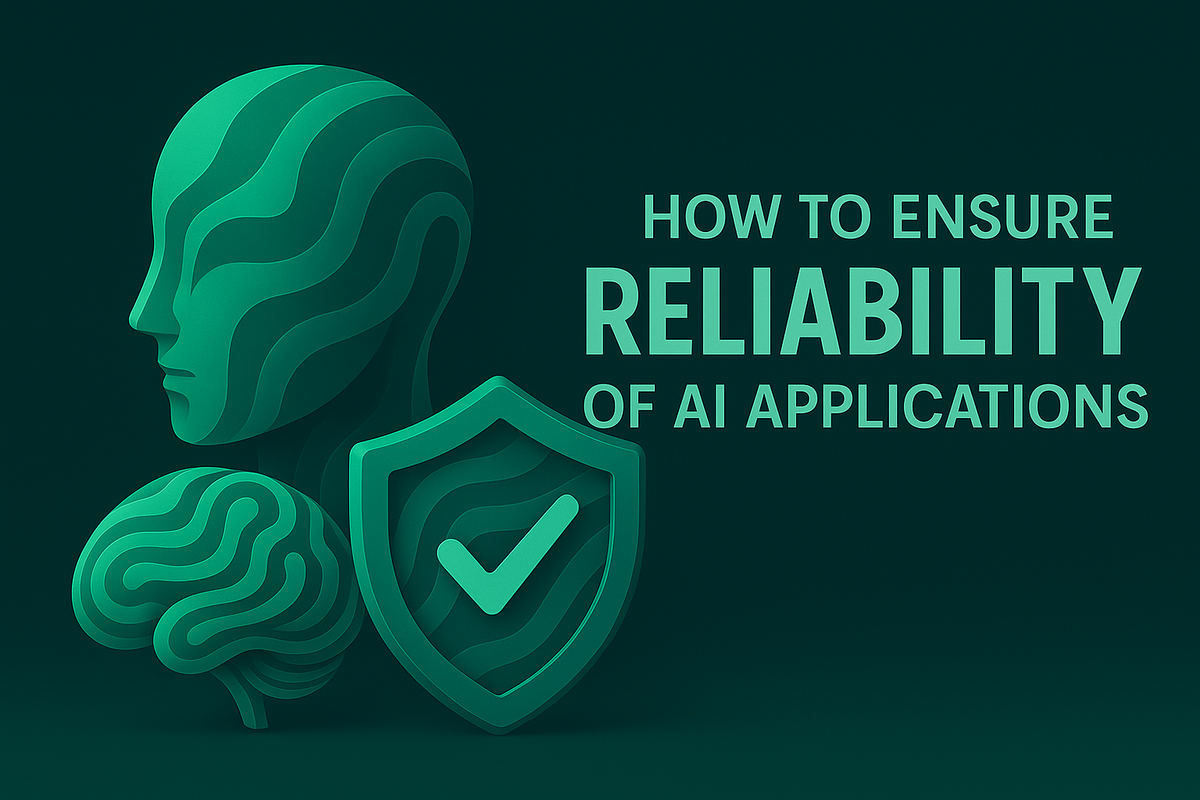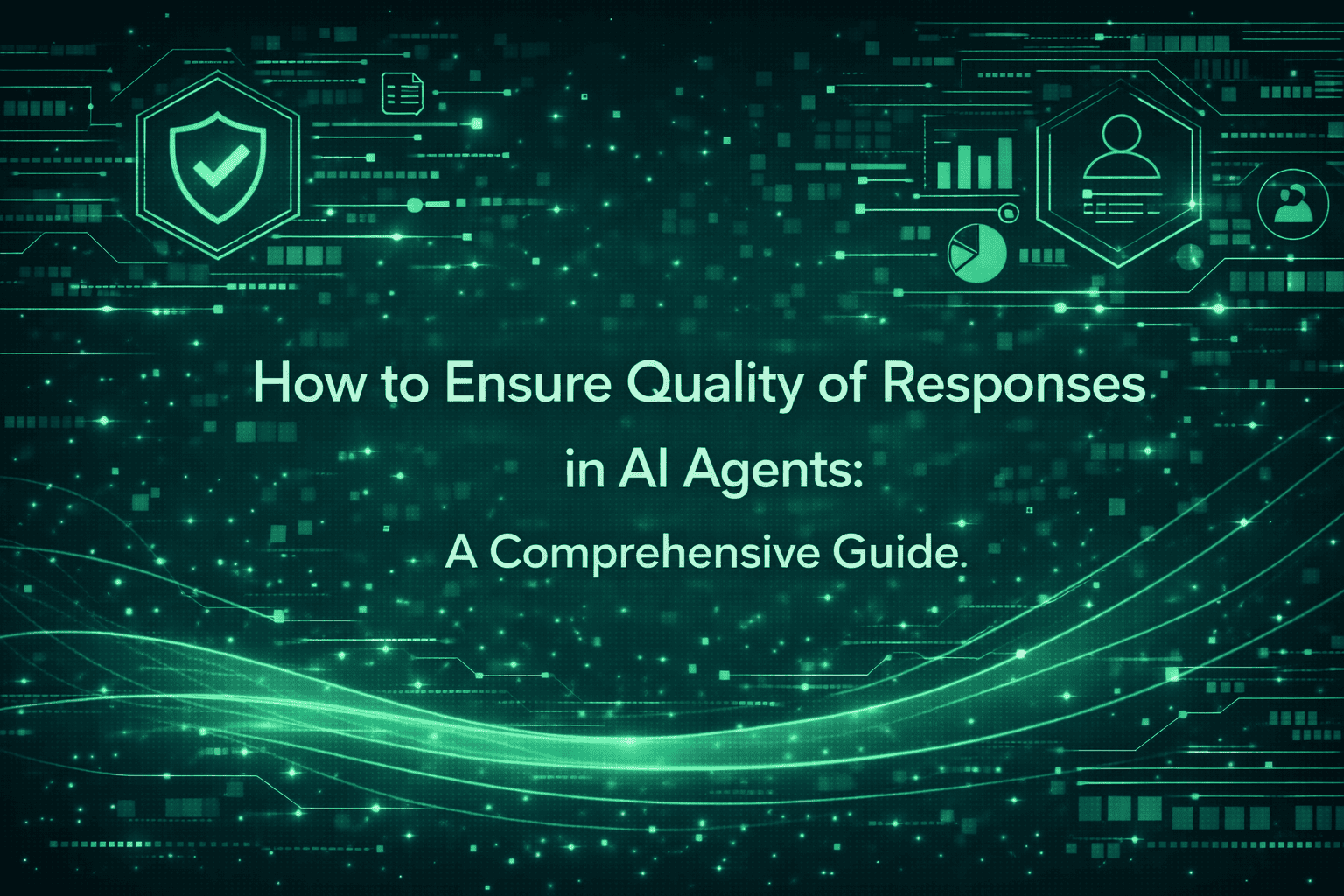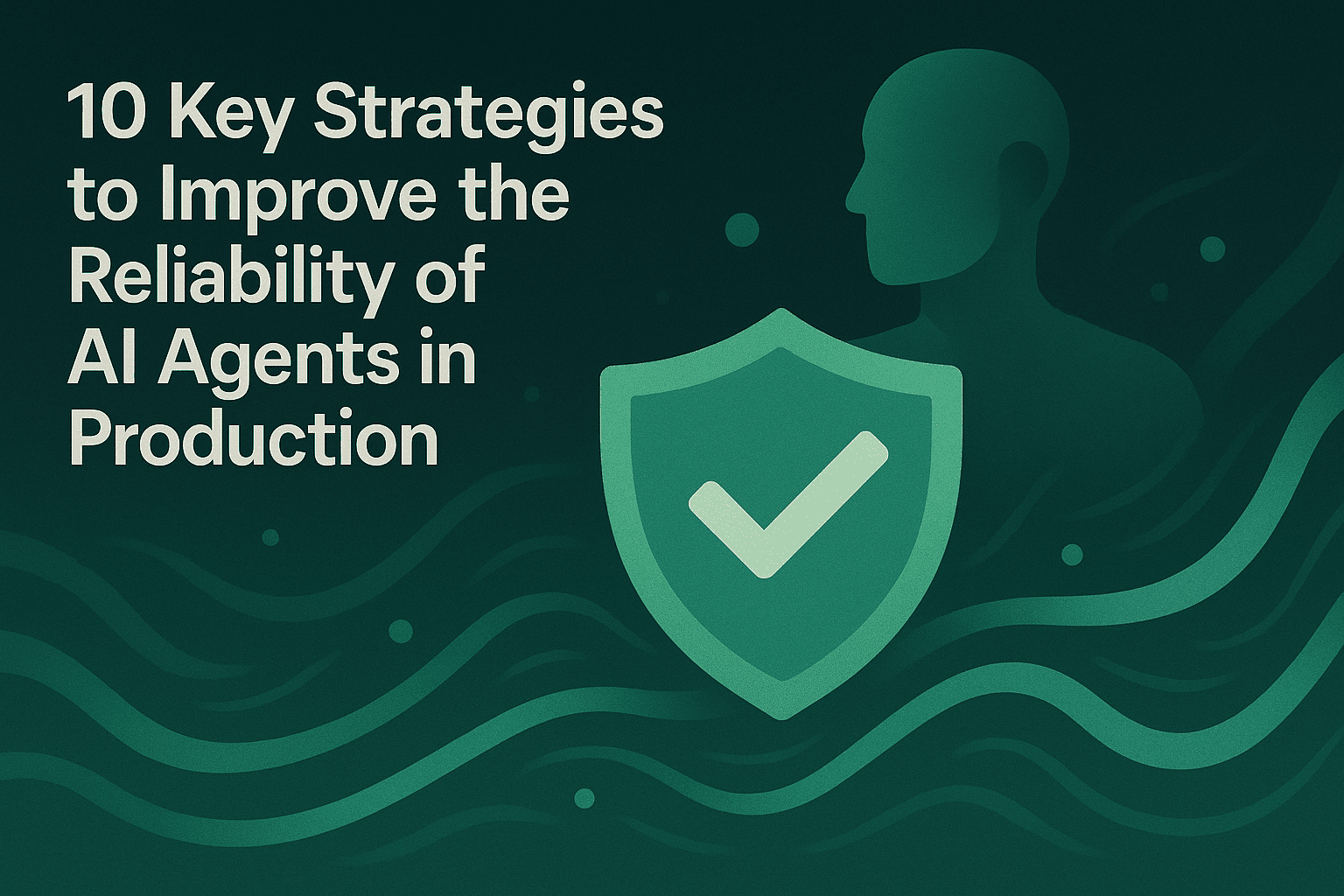How to Ensure Reliability of AI Applications: Strategies, Metrics, and the Maxim Advantage

Artificial intelligence is rapidly reshaping industries, from customer support to healthcare, finance, and beyond. Yet, as organisations integrate AI into mission-critical workflows, reliability and AI quality remains the defining factors that separate successful products from costly failures. In a world where AI agents can autonomously handle complex tasks, ensuring that these systems operate consistently, accurately, and reliably is not just desirable, it’s essential.
In this comprehensive guide, we’ll explore the multifaceted challenge of AI reliability, dissect proven strategies for building robust systems, and showcase how Maxim AI’s evaluation and observability platform empowers teams to achieve enterprise-grade reliability. We’ll also compare Maxim with leading competitors and link to authoritative resources for deep dives into best practices.
Table of Contents
- Why Reliability Matters in AI Applications
- Challenges in Achieving AI Reliability
- Core Principles of Reliable AI System Design
- Simulation and Pre-Release Testing
- Observability and Post-Release Monitoring
- Human-in-the-Loop Evaluation
- Best Practices and Further Reading
- Conclusion
Why Reliability Matters in AI Applications
Reliability in AI is the assurance that systems consistently deliver accurate, safe, and predictable results, regardless of input variability. In domains like healthcare or finance, unreliable AI can lead to harmful outcomes, regulatory penalties, and loss of customer trust. Even in less risky sectors, unreliable AI agents can erode customer confidence and undermine business goals.
Consider the difference between a chatbot that occasionally misinterprets user queries, does not adapt to customer behavior and one that reliably resolves support tickets, adapts to complex scenarios, and evolves based on customer feedback. The latter is not only more valuable but also scalable and sustainable.
Key Reasons for Prioritizing Reliability
- User Trust and Adoption: Reliable AI fosters user confidence and accelerates adoption.
- Business Continuity: Prevents costly downtime, errors, and operational disruptions.
- Regulatory Compliance: Meets industry standards for safety, fairness, and transparency.
- Scalability: Enables organizations to expand AI capabilities without sacrificing quality.
Read more about the importance of agent quality in AI applications.
Challenges in Achieving AI Reliability
Designing reliable AI applications is uniquely challenging due to the non-deterministic nature of large language models (LLMs) and the dynamic contexts in which they operate.
Key obstacles include:
- Non-determinism: Identical inputs can yield different outputs due to model's inherent randomness in generating responses.
- Real-world Complexity: Diverse user queries, edge cases, multitude of user personas and ambiguous scenarios.
- Long-term Adaptability: LLMs are continuously evolving, but with each model upgrade your agent's behavior might change drastically. Starting with your system prompts and guardrails, you need to continuously iterate to make sure your AI applications adapt and stay reliable for the end-user.
- Unpredictable Failure Modes: Errors may only surface in production when real users interact with your agents, requiring ongoing monitoring and pre-production simulation runs to discover failure modes associated with divergent user personas and real-world scenarios.
- User-Specific Variations: Different users interact in distinct styles, demanding adaptive responses.
- Bias and Safety Risks: Potential for unintended, harmful, or biased outputs.
Explore common challenges in evaluating agent quality.
Core Principles of Reliable AI System Design
To build reliable AI applications, teams must embrace best practices from both traditional software engineering and modern AI development:
1. Rigorous Experimentation
- Use controlled experiments to test prompts, agents, and workflows.
- Employ versioning and systematic comparisons to identify optimal configurations.
- Leverage platforms like Maxim’s Playground++ for advanced prompt engineering.
- Run extensive simulated sessions with varios real-world scenarios and user personas to surface failure modes in pre-production stages.
2. Comprehensive Evaluation
- Quantify failure modes, response quality and regressions using automated and human evaluations.
- Access off-the-shelf and custom evaluators to assess accuracy, clarity, bias, and more.
- Visualize evaluation runs across large test suites and multiple versions.
3. Robust Observability
- Monitor real-time production logs for anomalies and quality issues.
- Implement distributed tracing to track the full lifecycle of requests and responses.
- Use automated evaluations and custom rules to measure in-production quality.
4. Continuous Data Management
- Curate and enrich multimodal datasets for ongoing evaluation and fine-tuning.
- Import, filter, and split datasets for targeted experiments.
- Integrate feedback loops for iterative improvements.
Learn more about Maxim’s platform overview.
Simulation and Pre-Release Testing
Pre-release testing is the foundation of reliability. Simulation-based evaluations enable teams to validate agent behavior across a spectrum of scenarios before deployment.
Maxim’s Simulation Capabilities
- Multi-turn Simulations: Test agents in realistic, scenario-based multi-turn conversations.
- Custom Datasets: Configure agent scenarios and expected responses for targeted testing.
- Persona and Context Configuration: Simulate diverse user emotions, expertise levels, and business contexts.
- Automated Test Runs: Execute and review detailed results for every scenario.
Explore Maxim’s simulation features. Learn how to run simulation tests.
Best Practices
- Design tests that mimic real-world complexity, user personas, including edge cases and ambiguous queries.
- Use simulation to evaluate adaptability, context handling, and policy compliance.
- Review granular results to identify weak points and iterate before production.
Read about simulation-based agent evaluation workflows.
Observability and Post-Release Monitoring
Reliability doesn’t end at deployment. Continuous monitoring ensures that AI agents maintain quality in live environments and adapt to evolving user needs.
Key Observability Features
- Distributed Tracing: Track complete request lifecycles, including LLM calls, tool usage, and context retrievals.
- Real-Time Monitoring: Analyse metrics like latency, cost, token usage, and user feedback.
- Custom Alerts: Set thresholds for performance issues and receive notifications via Slack, PagerDuty, or OpsGenie.
- Session, Trace, and Span Analysis: Drill down into multi-turn interactions and individual decision nodes.
Discover Maxim’s agent observability platform. Learn about tracing concepts.
Integrations
- Seamless integration with agent frameworks such as OpenAI Agents SDK, LangGraph, and Crew AI.
- OpenTelemetry compatibility for exporting logs to external observability platforms.
See how to integrate with OpenAI Agents SDK.
Human-in-the-Loop Evaluation
While automated metrics are powerful, human judgment remains essential for nuanced quality assessment. Maxim streamlines human evaluation through:
- Human Evaluators: Attach domain experts or crowdsourced annotators to review agent outputs.
- Annotation Queues: Create automated or manual queues for targeted human review.
- Integrated Feedback: Incorporate human insights into ongoing refinement cycles.
Set up human annotation on logs in Maxim.
Best Practices and Further Reading
For teams seeking to master AI reliability, consider these best practices:
- Design for Testability: Structure agents and workflows with simulation, evaluation and observability in mind.
- Automate and Iterate: Build automated pipelines for online and offline evals
- Integrate Human Feedback: Add Human in the loop evals to evaluate your agent responses.
- Monitor and Alert: Set up real-time alerts and notifications to get updates on failures and regressions in production.
Recommended Resources
- Agent Evaluation: Understanding Agentic Systems and their Quality
- Evaluating AI Agent Performance with Dynamic Metrics
- Building Robust Evaluation Workflows for AI Agents
- Anthropic: Building Effective AI Agents
- OpenTelemetry
- Arxiv: Evaluating Agentic Systems
Conclusion
Reliability is the cornerstone of every successful AI application. By embracing rigorous evaluation, robust observability, simulation-based testing, and continuous improvement, organisations can build AI systems that deliver consistent value, earn user trust, and scale with confidence. Maxim AI stands at the forefront of this movement, providing the tools, platform, and integrations needed to ensure your agents perform reliably, every time.
Ready to ship reliable AI agents faster? Get started with Maxim AI.


